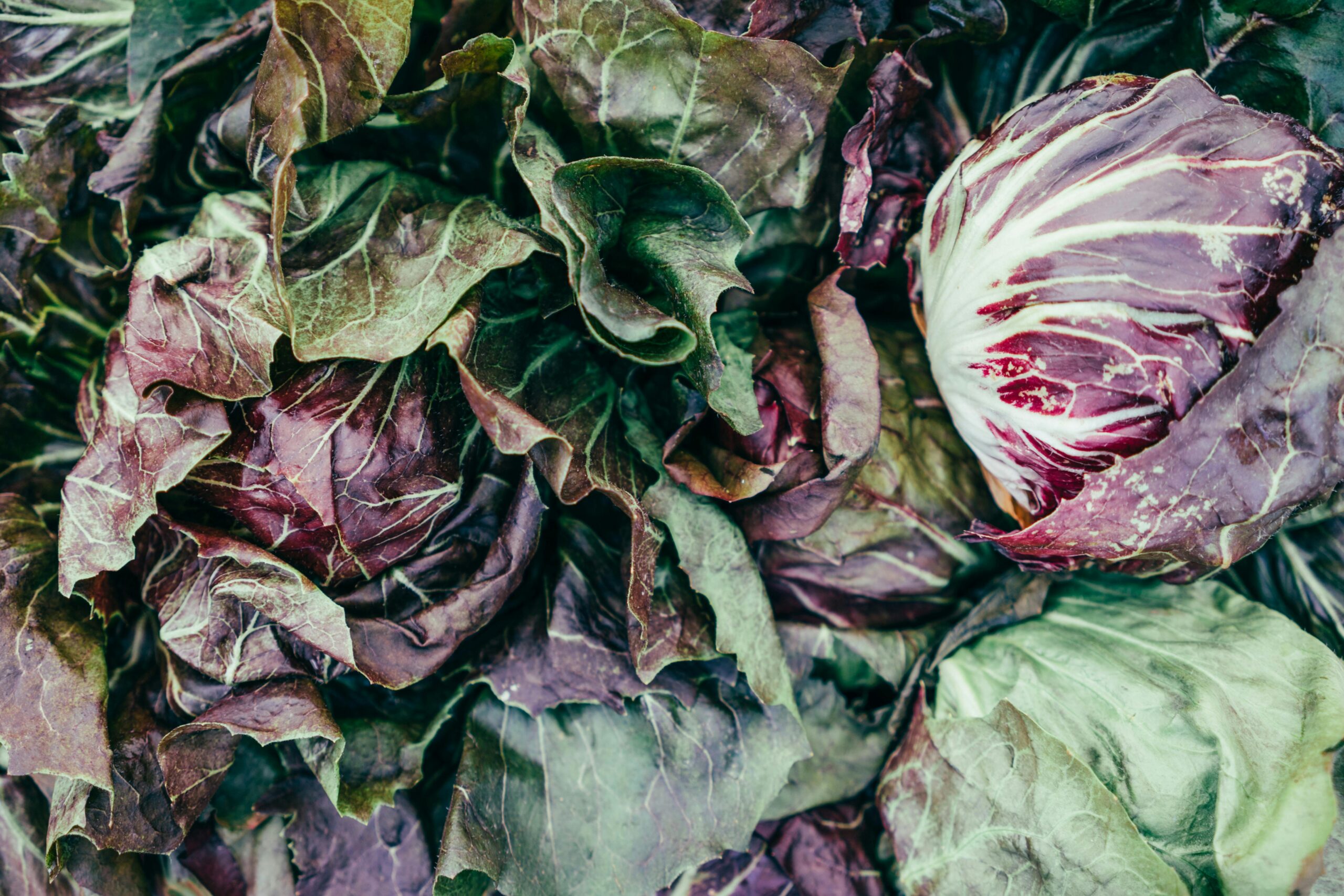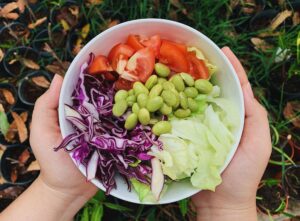Is Cabbage Good For You? Health Benefits Of Cabbage Explored!

Cruciferous vegetables have formed an important and popular part of our diets for hundreds of years. They have evolved into the many different species that we know today. Similarly, our methods of cooking with them and enjoying them have evolved as well. Besides being tasty, cheap to produce, and filling, cruciferous vegetables such as cabbage are incredibly healthy and pack a pretty large amount of nutrients, minerals, and vegetables per serving. This makes them a cheap and easy-to-eat dietary supplement.
Cholesterol and heart disease in general are issues that have become more pressing in modern times. While the emphasis on healthy living and a proactive lifestyle has become popular within mainstream culture, the fact is that too many people are still suffering from these otherwise largely avoidable health issues. The best way to treat the symptoms of bad health is through following a guided and balanced diet and getting enough exercise on a regular basis.
The idea of using food as medicine is nothing new. In fact, it’s the building block of modern medicine. So seeing a revival in placing an emphasis on preventative healthcare rather than symptomatic treatments has revitalized the notion that by following a careful diet, you can prevent the onset of a wide variety of illnesses and diseases. All while maintaining, and ultimately improving, the quality of your health.
Cabbage has long been a staple food in both the East and the West. The many varieties of cabbage and the plants that belong to the same family as cabbage have immense health benefits. You can use them to bolster your natural immune system. They can also improve many of the bodily functions that our health depends on. Want to find out more about this amazing vegetable? This article is chock-full of the information you’re looking for.
What Is Cabbage? How Is Cabbage Grown?

There are different types of cabbage which you can enjoy.
What is cabbage? How is cabbage grown? Cabbage is thought to have stemmed from the mustard family of plants due to their similarities in leaf shape and size. The cabbage plant occurred naturally as a mutation in around 1000 BC.
The cabbage plant does best in colder climates and is a winter crop. High levels of heat and direct light cause the plant to flower prematurely. This reduces the amount of mineral and nutrient-rich leaves that tend to develop in colder conditions.
The plant originated in Britain and grew in isolated areas such as rock faces or cliffsides. This is because it didn’t grow well when competing with other plants. Over time, though, people domesticated the plant. They used it for cultivation purposes throughout Britain and the northern parts of Europe.
As time moved on, the plant became a popular food source due to its rich nutrient and mineral content. (Although this wasn’t scientifically proven yet, many scholars of the time boasted the immense health properties of the plant.) People later traded it through various parts of the world. It spread from Europe to parts of the Middle East. It even eventually spread as far as the Far East and western countries like America.
Since the domestication of the cabbage plant, people have cultivated a wide variety of species in various regions of the world. Each has its own specific health benefits and nutrient profiles. Some of the more popular varieties are the Savoy, Spring Green, Green, Red, and White cabbage.
The most common nutrients and vitamins that you’ll find across all species of cabbage are boron, calcium, phosphorus, and potassium. Cabbages also possess manganese and vitamins K, B6, and C. So it’s pretty easy to see why this vegetable is simply a must-have for any healthy diet.
Benefits Of Eating Cabbage Explained
Cabbage has a large amount of vitamins A, C, and D. When concentrated in the form of juice, the health benefits go up exponentially. Vitamins A and D are imperative for healthy skin, as they aid in the process of skin cell growth and the development of stronger, healthier skin cells. This means that your skin is better able to protect itself against environmental damage and can recover more effectively during times of healing. Vitamin C is highly effective at flushing toxins out of our system, which may make their way to the surface of our skin. It also helps to increase the tightness of our skin, therefore reducing signs of aging such as wrinkles or the formation of dark rings under the eyes.
Cabbage is also rich in vitamin E and potassium. This helps to prevent the onset of infection. It also greatly improves your body’s ability to heal and replace any skin cells that may have experienced free radical damage or damage from environmental exposure, therefore also prolonging the signs of aging (when used earlier enough).
Finally, cabbage is also a rich source of naturally occurring sulfur. Sulfur is a mineral that is known to help increase the synthesis of keratin and decrease the likelihood of breakouts or the formation of acne due to its drying effect. For this reason, a blend of cabbage juice, lemon juice, and essential oils such as lavender and bergamot can be highly effective at treating your skin on a topical level or even used as a health tonic in small doses to help flush out your system.
Cabbage For Weight Loss

Eating cabbage can help with weight loss.
Many view cabbage as a crucial ingredient for aiding in the weight loss process. You can use it with a diet and fitness routine to help you burn excess calories and fat quite quickly. You can use cabbage for weight loss because it’s a low-calorie food. Plus, it has tons of healthy nutrients, minerals, and vitamins. You can eat it either raw or cooked. You can even use it as the key ingredient for creating fermented vegetables such as sauerkraut or kimchi, which are loaded with healthy, natural probiotics.
By reducing the amount of calories you take in, you reduce the amount of calories that you have to burn. This makes it easier to lose weight. However, real weight loss can only happen when you follow a diet carefully. You must do this over a long enough period of time for your body to adjust to the dietary limitations or effects, along with a balanced exercise routine.
Cabbage is tasty and easy to include in a variety of dishes. You can, therefore, use it to help fill you up and supplement your diet. Your body needs cabbage’s nutrients in order to sustain healthy bodily functions and maintain a functioning immune system, all while not placing too much strain on your body in terms of calories.
But cabbage goes a little further than that. It can help to improve the quality of your digestive system and the bacteria count in your gut. This increases the efficacy of your digestive system with regard to the amount of probiotics that you can find in your gut. It, therefore, aids in the treatment of more serious health issues which can lead to a variety of symptoms such as weight gain.
Cabbage For Cognitive Functioning
Cabbage is packed with antioxidants and anti-inflammatory agents, which is why you can enjoy using cabbage for cognitive functioning improvements.
When our body becomes overloaded with toxins, we experience an increase in the amount of oxygenated molecules in our body, known as free radicals. These molecules can be detrimental to our cognitive abilities and nearly every bodily function that we have. Limiting or expelling them from our bodies is probably the best way to treat the issue. Reducing the amount of free radicals we come into contact with is more challenging than it seems due to their occurrence in air pollutants, water sources, and a variety of products that we use.
By eating antioxidant-rich foods, we can trap free radical molecules before they spread throughout our body and cause negative effects. Cabbage is rich in antioxidants such as vitamin E, C, indole-3-carbonile, vitamin B6, and vitamin K.
By including lots of water and antioxidant-rich foods in your diet, you can preemptively avoid the damage caused by free radicals and increase the function of various aspects of your body – in this case, your brain and cognitive functions in specific. When free radicals make their way into your brain, your cognitive functions start to slow down or degenerate. From there, you stand a higher chance of developing issues such as strokes and the earlier onset of degenerative diseases such as Alzheimer’s. So it’s imperative that you start following an antioxidant-rich diet earlier in life.
Cabbage For Skin Health

Cabbage can help treat free radicals, thereby giving your skin a boost.
Many of the same antioxidants in cabbage which can help treat the occurrence of free radicals in your system can also be used to treat, heal, and improve the overall quality of your skin. Not to mention that by treating the levels of free radicals that you find in your system, you inadvertently improve the quality of your skin at the same time.
There are many ways that you can use cabbage to help treat your skin’s health. You can apply leaves topically to areas of concern on the surface of your skin. You can also blend the various ingredients to form a paste that you can wear like a face mask. But for the sake of this article, I’m going to focus on the benefits that you can enjoy from consuming the vegetable directly.
Cabbage For Bone Health
Protecting our bones becomes more and more important as we grow older due to the fact that we tend to have fewer nutrients available in our system as we age since our metabolic and digestive system starts to slow down.
Among the many foods that are recommended for improving bone health and function, cabbage ranks surprisingly high. Some of the nutrients that are necessary for increased bone health and strength are iron, protein, vitamin K, manganese and magnesium. Luckily, these can all be found in cabbage, and in relatively high amounts.
If you really are trying to increase the strength and quality of your bones, or you’re trying to speed up the recovery process after an injury, the best way to do so is through a combination of different dietary supplements. This will increase the efficacy of the treatment. Eating cabbage alone isn’t going to do much, but it can certainly be beneficial. The inclusion of leafy greens such as spinach, kale, and Swiss chard is incredibly beneficial for improving the quality of your bone health and make a tasty, low-calorie addition to any meal or diet plan.
Red Cabbage Vs. Green Cabbage Explained

What’s the difference between different kinds of cabbage?
And now for the ultimate red cabbage vs. green cabbage debate. Both red and green cabbage are incredibly beneficial for you. Furthermore, you should use them in conjunction to provide you with the most health benefits. Yet red cabbage outperforms green cabbage in a number of ways. The reason for this is largely based on the soil in which the cabbage forms. (There are benefits and downsides to that as well, but that’s a different topic altogether.) However, as a rule of thumb, red cabbage tends to grow in more acidic soils than green cabbage. This means that there is a greater conversion of nutrients in the soil into anthocyanins in the vegetable itself.
Red cabbage contains many of the nutrients, vitamins, and minerals that we need for a healthy and functioning system. It contains roughly 85% of our daily intake of vitamin C. This is surprisingly more than oranges and roughly 33% more than that of green cabbage. Red cabbage also contains a great deal more vitamin A and K than green cabbage.
Additionally, red cabbage has nearly twice as much iron per serving. You can also use it to help increase the amount of red blood cells found in your body. This ultimately allows for greater healing and faster recovery, while improving your body’s overall immune system, your complexion, and your bone health/strength when used regularly in your diet. Red cabbage is the better option in terms of mineral, nutrient, and vitamin profiles. Yet the two vegetables actually work very well together. They can easily be included in a variety of different dishes.
Side Effects Of Over-Eating Cabbage & How To Choose The Right Cabbage
It’s true, there are some pretty great health benefits that come with eating cabbage regularly. Yet eating too much cabbage can have some detrimental effects on your health. As with all things in life, too much of a good thing can be bad for you.
One of the more notable side effects of over-eating cabbage is decreased iodine levels. This occurs because cabbage has a tendency to absorb iodine in the body. The result can be thyroid problems, as your thyroid needs iodine to function properly. Too much cabbage can also lead to an increased risk of diarrhea due to cabbage’s high levels of fiber. Another side effect is low blood sugar levels since cabbage can absorb excess glucose in the body. This is good for diabetics but can be detrimental if this is maintained for a long period of time.
It can also have an impact on breastfeeding mothers. If they eat too much cabbage, minerals will be transferred from the mother’s breast milk into the child’s digestive system. This can encourage the development of colic in your child.
Cabbage may also have a negative effect on certain types of antiplatelet medication used to help thin the blood. The high levels of vitamin K in cabbage aid in the formation of blood clotting. While this may be beneficial for wound recovery or skin cell generation, it will decrease the effects of antiplatelet medications.
Including Cabbage In Your Diet
When it comes to choosing the right cabbage for your diet, consider two things. Firstly, think about how much cabbage you’ll be including in your diet. Also, figure out what you’re looking for in terms of dietary supplementation. Do you simply want to add a small amount of cabbage to your diet? Then a single head of red cabbage should be enough to feed two to three people a week. This depends on how much you cook with it and how often you plan to include cabbage in your meal.
However, I would always recommend opting for two smaller cabbages of both the red and green variety. This will improve the amount of health benefits that either can provide for your body. You’ll want to check for things like mold on the surface of the cabbage. Also, check just underneath the first few layers when selecting a viable choice.
Raw Cabbage Diet Explained

Adding cabbage to a smoothie is one of the best ways to eat it.
Eating cabbage raw increases the amount of available phytonutrients, minerals, and vitamins that you include in your daily diet. That’s because raw cabbage contains the highest amounts of these.
Cooking cabbage in water causes it to lose a lot of its nutrients to the water and through steam loss. So unless you plan on including that water as part of your meal, you’re reducing the amount of healthy elements that can be found in cabbage. Ultimately, this detracts them from your diet as well.
Eating a raw cabbage diet or processing it into a smoothie helps it retain the largest amount of minerals, vitamins and nutrients. Another way to prepare cabbage without losing many health benefits through light sautéing. Sauté for no longer than 5 minutes to ensure that the cabbage doesn’t burn. This lets you alter the texture and add flavor to your dish without compromising on the health benefits of cabbage. Otherwise, stick to a salad with raw cabbage.
Conclusion
It’s easy to see why cabbage is such an important part of our everyday diet. I think understanding just how many health benefits cabbage could actually provide for us is the best way to encourage us to eat more on a regular basis.
Cabbage is great in a stir fry, a soup, a salad, or as an ingredient in a juice or smoothie. However you eat it, the benefits this tasty and cheap vegetable provide make it more than worthwhile to include in your diet. Whether you’re trying to improve your skin health, better your digestive system, improve your immune system or simply lose weight, cabbage is an all-round winner. It should definitely be in as many meals as possible.


